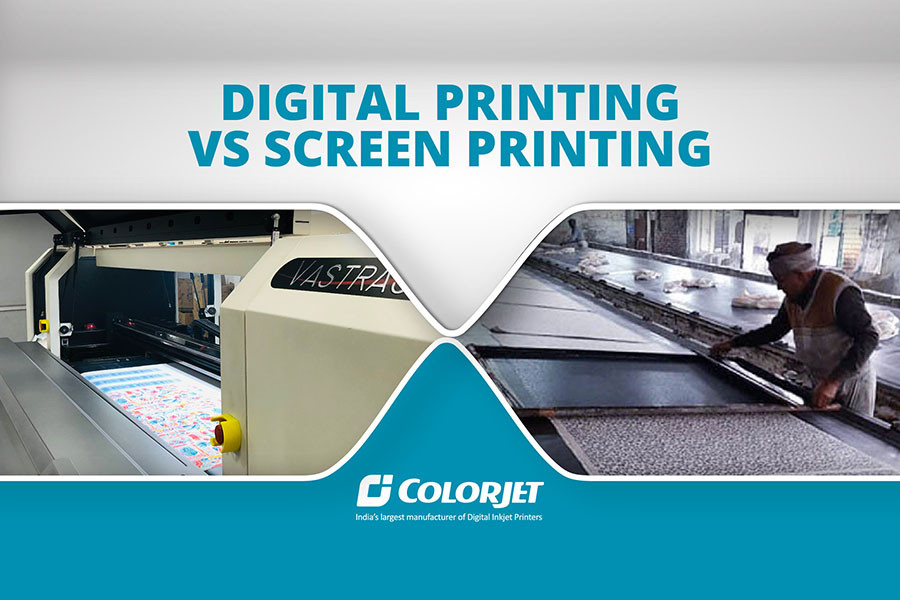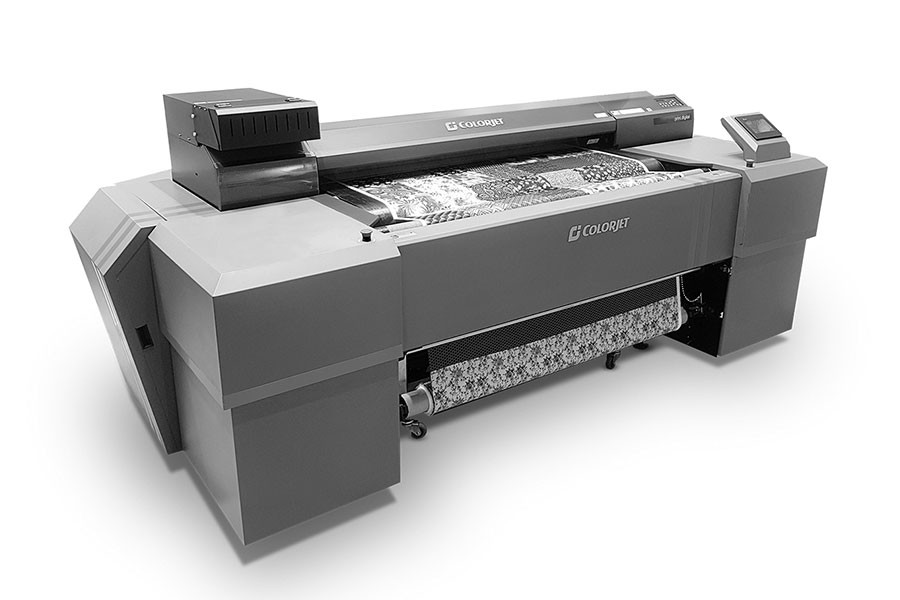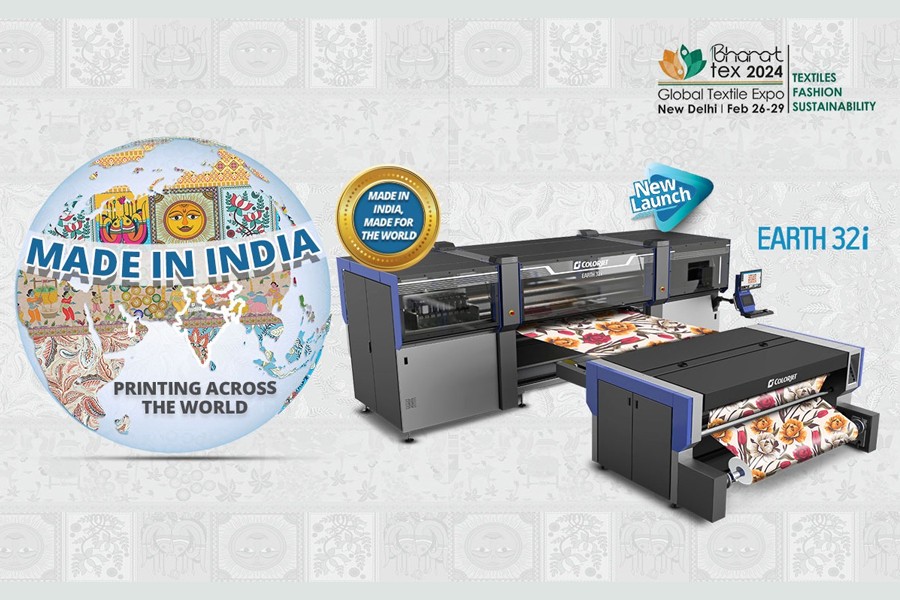
Digital Textile Printing is relatively young compared to Analogue printing – rotary and screen printing. Yet, digital inkjet printing has made a mark in the textile printing industry very quickly and is growing at an amazing rate the world over. AMR (Allied Market Research) shows that Digital Textile Printing market will reach $8.8 Billion by 2027 at 19.1% CAGR from 2020 to 2027. Digital Textile Printing is still evolving and yet the existing solutions offer a range of exciting opportunities for the textile printing industry. It is almost as if all limits and constraints to creativity have been removed. In this article, we do a comparison between digital printing and screen printing based on various parameters.
When opting for digital printing over analogue printing, it is important to understand the value and enhancements that digital printing offers, right from the manufacturing unit to the end-user of the product.
We could look at the differences below:
Colours Scope
Analogue printing requires as many printing stations as the number of colours in the printing. More colourful a design, the more the number of printing stations and the longer the machine. The digital inkjet printer, on the other hand, is a study in contrast to this. No matter how many colours an image has, it does not increase the workload of the operator.

The same design can also be printed in multiple colour tones. For example, a red flower on a green base can be changed to a red flower on a yellow base or a white base with ease. All that is needed is a design file that has those colour changes built into it.
Essentially, in digital inkjet printing, colours and colour changes don’t cost a dime more than monotone printing. It is virtually a no-limit aspect, when compared to analogue printing.

Another important difference with rotary and screen printers is that each printing station requires a screen or mesh through which dye paste is squeezed through the fabric. The printing is only as sharp and fine as the mesh and the pattern made on it.
Digital printing will print the sharpest of line arts with the same ease as large solid patches. In addition, there is a seamless confluence of colours to create halftones and other such effects that lend a 3-dimensional effect on the fabric.
Photo print quality, complete with shadows and soft focus effects are possible to recreate on fabric. The texture of fabric would have a role to play in all this but that is another dimension of digital printing that has to be managed.
Speed of Response
Another feather in the cap of Digital Textile Printing is that it accelerates the printing process, from strike-off to production. Lead time can be shortened easily as there is no screen to be prepared and no registrations to be aligned. From digital image file to print on the fabric is a matter of minutes in digital inkjet printing. This helps in meeting the demands of fast fashion and getting new ideas to the market at a much faster pace.

Ease of Creativity
In rotary or flatbed printing, creativity is constrained by the limitations of analogue printing. In digital inkjet printing, the creator’s imagination is the limit. In analogue printing, a designer has to work within the limitation of the hardware viz. repeat size, number of printing stations, etc.

MOQ
Digital inkjet printing is a business enabler. It allows printing the shortest print lengths and also long print runs. In Digital printing, Printers negotiate the price based on how many hundred metres need to be printed or sometimes, even tens of metres.
In general, when the print run is long, rotary screen printing is the more economical option. For smaller print runs, digital inkjet printing would cost less.

Sustainability


With the rise in demand for sustainable products, the textile printing industry is also moving towards sustainable practices. Digital Textile Printing helps in reducing carbon footprint and improves the green image of a textile printing company. With the reduction in generation of waste material (around 95% less waste) and low consumption of dye, digital inkjet textile printing is vastly more environment-friendly. Digital Textile Printing also helps in the reduction of water consumption by a huge margin of 60% along with lower chemical usage and 55% less power consumption*.
*Source: www.texintel.com
New Business Models

Digital Textile Printing opens up new business opportunities and the option to benefit from the latest business models. Since digital textile printing comes with a lot of flexibility, the fashion labels can opt for smaller batches of a particular design and place repeat orders as and when the product starts selling well.
With the onset of digitization, the fashion industry is rapidly changing. People are moving towards online shopping and hence require a lot of options in order to decide what to buy. A large variety of designs is the requirement for any fashion brand to attract customers. The change in trend, style, colour, or fashion, happens at a much quicker rate than before. Digital textile printing makes it easier for the brands to print a new order and get it delivered to the customer in a short span of time. Keeping this advantage in mind, the fashion brands of the world are getting more and more willing to collaborate and partner with digital printers instead of conventional ones.
Digital textile printing is on the rise and is often considered the future of textile printing. ColorJet, India’s largest manufacturer of Digital Inkjet Printers offers a variety of optimized Digital textile printers that are compact, offer a lucrative total cost of ownership, and gives the possibility of a unique design, option of a million colours to choose from, high productivity, and high-quality print. This latest innovation is backed by a technically strong customer-centric service team.
The R&D department of ColorJet is recognized by the Department of Science and Technology, Government of India. The unique 3E design philosophy: Economic, Efficient, and Ecological helps ColorJet in rolling-out innovative products that help you in maximizing your business with increased profitability along with sustainable printing.
Digital Textile Printers from the house of ColorJet print on a wide variety of media along with compatibility with different types of inks. ColorJet offers an exclusive range of Digital Textile Printers with unprecedented benefits backed by our extensive knowledge.
Vastrajet | SubliXpress | Metro | Fabjet Duo | Aurajet – D Series II | Fabjet Grand | TXF

Related Blogs



